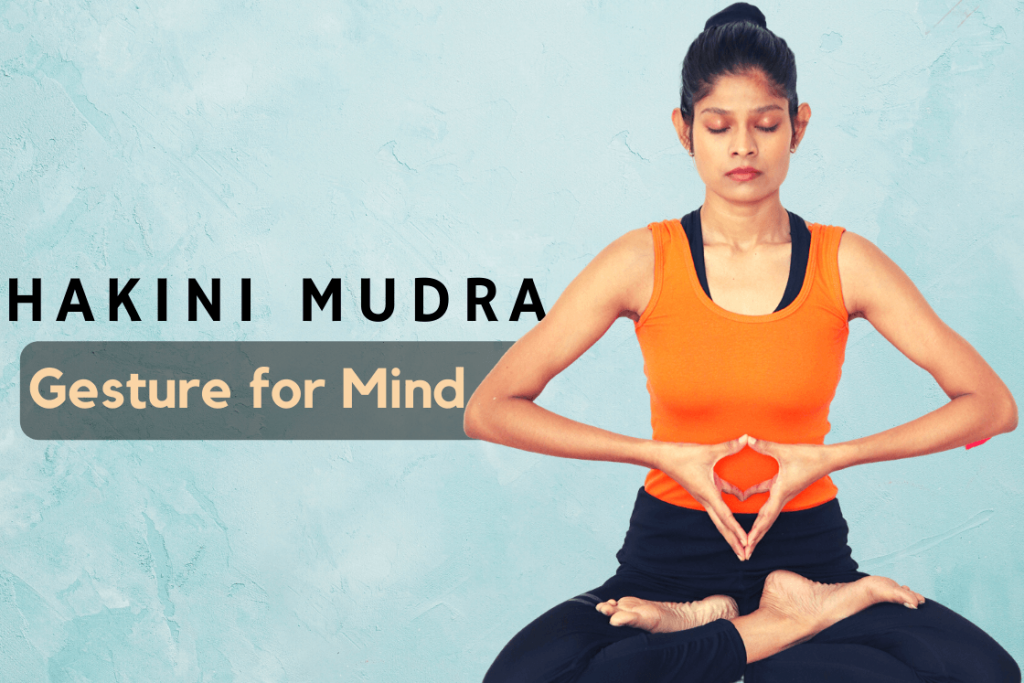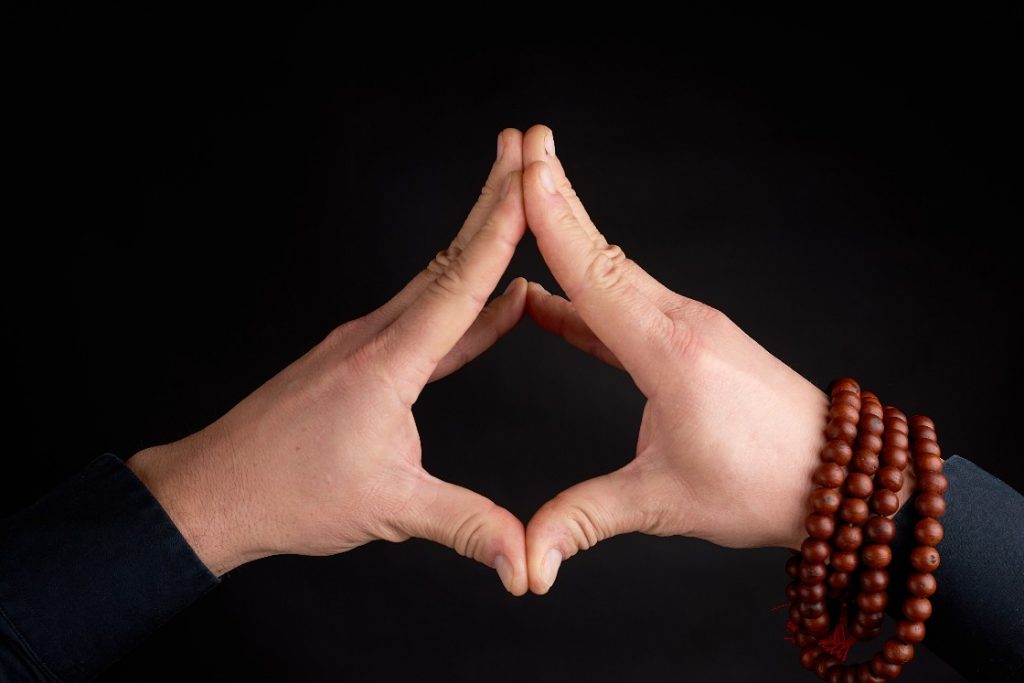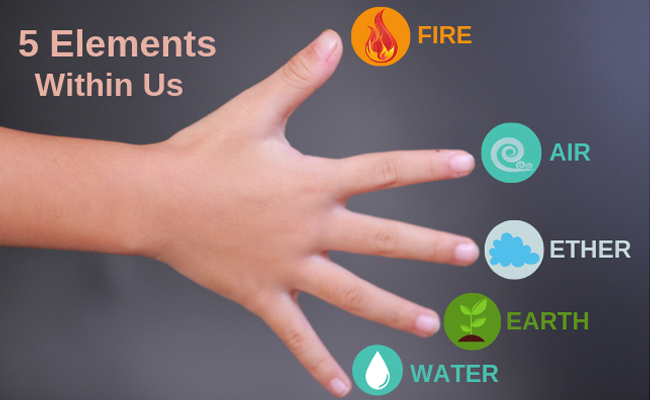
Hakini Mudra, often called the “Mudra for the Mind” or “Brain Power Mudra,” is a powerful hand gesture in yoga that helps enhance mental clarity, concentration, and cognitive abilities. Rooted in ancient yogic traditions, this mudra is closely associated with the Ajna (third-eye) chakra, which governs intuition, insight, and intellect. By practicing Hakini Mudra, one can harness the mind’s power to improve focus, memory, and emotional balance.
Meaning & interpretation
Hakini Mudra is named after the goddess Hakini, known for her wisdom and connection to the third-eye chakra, located between the eyebrows. This chakra plays a key role in intuition and intellect, making Hakini Mudra particularly effective for mental clarity and cognitive enhancement.
Ancient texts such as the Yoginihrdaya identify Hakini as one of seven goddesses, Amrtananda, Dakini, Rakini, Lakini, Kakini, Sakini, and Hakini each linked to different bodily elements. These goddesses support various bodily structures, including skin, blood, and bones. Some texts also depict Hakini as a powerful female demon.
In yogic tradition, the five fingers of Hakini Mudra represent the five elements: earth, water, fire, air, and space. When the fingers come together, these elements are thought to stimulate the brain, enhancing mental and psychic abilities. The mudra also helps balance the pranas, or vital energies, in the body.
How to do hakini mudra(steps)

- Sit in a comfortable seated posture, such as Padmasana (Lotus Pose), Vajrasana (Thunderbolt Pose), or Sukhasana (Easy Pose).
- Close your eyes and relax, focusing on your breath. Allow your gaze to shift upward, toward the third-eye chakra between the eyebrows.
- Place your hands on your knees or thighs, palms facing upward.
- Slowly bring your hands to chest level, with the palms facing each other. Gently touch the fingertips of both hands together, making sure each finger corresponds with its counterpart on the opposite hand.
- As you maintain the finger connection, focus on your third-eye chakra and bring your awareness to your breath.
- Inhale deeply, placing your tongue against the roof of your mouth (known as khechari mudra), and release your tongue on the exhale.
- Continue breathing in and out, ensuring that the length of your inhalation matches the exhalation.
- Perform this mudra while chanting OM in your mind and remove all the unnecessary thoughts.
Time & duration
- Ideal Time: The best time to practice Hakini Mudra is during the early morning, particularly between 4 a.m. and 6 a.m. This time, known as Brahma Muhurta, is considered the most conducive for mental clarity, focus, and spiritual practices.
- Duration: Aim to practice Hakini Mudra for 30-45 minutes daily. If this feels too long initially, you can break it into shorter sessions of 10-15 minutes and repeat them throughout the day.
How does hakini Mudra enhance brain function?
How hakini mudra impacts our brain can be understood using the involvement of fingers in this mudra.
As hakini Mudra involves the attachment of the five fingers of both hands. These five fingers are the seat of the five elements:

- Little finger – Water Element
- Ring finger – Earth Element
- Middle Finger – Ether or Space Element
- Index Finger – Air Element
- Thumb Finger – Fire Element
On pressing all fingertips against each other, the brain centers get activated concerned with the subtle aspect of the physical and psychic body. Mantra chanting and meditation while pressing those points in Hakini Mudra stimulates the spiritual energy sitting at the floor or Muladhara or Root chakra.
If you feel low after small mental work, then the regular practice of hakini mudra lifts the energy flowing down from the root chakra to the Ajna chakra. It redirects energy along the spine to meet at the Ajna chakra. The confluence of Ida, Pingala, and Sushumna nadis at Ajna chakra brings the change in the memory retention, imagination, concentration, and brainpower of the practitioner.
However, practicing Hakini Mudra along with the three bandha (Jalandhar, Mool, and Uddiyana) also influences the consciousness and various psychological aspects of the individual.
Precautions & contraindications
- Avoid straining the mind, stay relaxed and focus on even breathing.
- Stay hydrated to prevent fatigue during the practice.
- Maintain balanced breathing; inhale and exhale slowly and evenly.
- Individuals with uncontrolled high blood pressure should consult a doctor before prolonged practice.
- Those with severe anxiety or stress should practice under supervision.
- If you have respiratory issues, ensure breathing remains controlled and gentle, and stop if you experience difficulty.
Side effects
Hakini Mudra is generally safe and does not have significant side effects when practiced correctly. However, it’s important to perform it with proper posture and breathing to avoid any discomfort.
Benefits of hakini mudra
Hakini Mudra offers numerous mental and physical benefits that can help improve your overall well-being. Below are some key benefits of practicing this mudra
- Enhances Memory and Focus: Practicing Hakini Mudra involves connecting the fingertips of both hands, which stimulates the brain by linking the left and right hemispheres. This enhances memory retention and improves focus, making it easier to concentrate on tasks and absorb new information.
- Boosts Mental Clarity: When performing Hakini Mudra, deep breathing is encouraged, which increases the oxygen supply to the brain. This process helps clear the mind of distractions, sharpening mental clarity and enabling more effective decision-making and problem-solving.
- Reduces Stress and Anxiety: The alignment of breath and hand gesture in Hakini Mudra helps calm the mind, reducing feelings of stress and anxiety. By focusing on controlled breathing and the third-eye chakra, the nervous system relaxes, bringing about a sense of mental peace and emotional balance.
- Stimulates Ajna Chakra for Spiritual Growth: Hakini Mudra activates the Ajna (third-eye) chakra, which is associated with higher intuition, imagination, and spiritual awareness. By focusing on this chakra during practice, individuals can enhance their intuitive abilities and deepen their spiritual journey. Over time, this can lead to greater self-awareness and spiritual insight.
- Balances Energies in the Body
Hakini Mudra aligns the body’s vital energies (Prana) by harmonizing the breath with mental focus. This balancing of energy helps stabilize emotions, improves mental health, and creates a feeling of overall harmony and vitality. - Regulates Blood Pressure and Supports Heart Health
Hakini Mudra improves breathing and blood circulation, which helps regulate blood pressure. It also enhances the coordination between the heart and lungs, promoting overall cardiovascular health. Consistent practice can aid in maintaining balanced blood pressure and a healthier heart.
Conclusion
Hakini Mudra is more than just a hand gesture; it is a powerful tool for enhancing mental clarity, boosting confidence, and promoting effective communication. By integrating this mudra into your daily practice, you can unlock a reservoir of inner strength and wisdom, helping you navigate life’s challenges with greater ease and confidence. Whether you are a student, professional, or spiritual seeker, Hakini Mudra offers a simple yet profound way to enhance your mental and emotional well-being.

